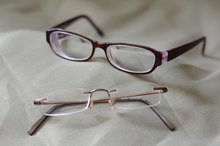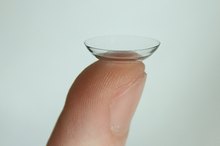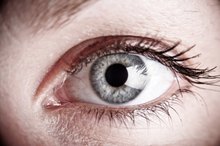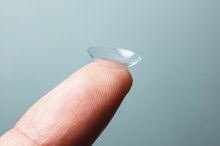What does fact checked mean?
At Healthfully, we strive to deliver objective content that is accurate and up-to-date. Our team periodically reviews articles in order to ensure content quality. The sources cited below consist of evidence from peer-reviewed journals, prominent medical organizations, academic associations, and government data.
- British Journal of Ophthamology: Evaluation of Keratometry, 1998
- British Journal of Ophthamology: Evaluation of Keratometry, 1998
The information contained on this site is for informational purposes only, and should not be used as a substitute for the advice of a professional health care provider. Please check with the appropriate physician regarding health questions and concerns. Although we strive to deliver accurate and up-to-date information, no guarantee to that effect is made.
The Differences Between Contact Lens Base Curve 8.6 & 8.9
Contact lenses are designed to fit on the front surface of your eye, called the cornea. The back curves of a contact lens, measured in millimeters, should match the curve of your eye.
Significance
When you have your contact lens fitting exam, your eye doctor measures the curves of your eye with a keratometer. The measurements are called k-readings.
Fitting
What Is the Average Eye Measurement for Contact lenses?
Learn More
Your eye doctor uses the k-readings to determine which contact lens's curve will give you the best vision, be the most comfortable, and keep your eye healthy.
Types
The base curve of a contact averages in the range of 8.0 to 9.5 millimeters, depending on the flatness or curves of the surface of your eye.
Features
How to Convert a Contact Prescription to a Glasses Prescription
Learn More
Lenses are usually available in just a few base curves per style, such as 8.3, 8.6 or 8.9. The lower the number, the steeper of the curve, or angle, of the lens and your eye.
Difference between 8.6 and 8.9
A lens with a base curve of 8.6 is steeper than a lens with a base curve of 8.9. Many factors affect the size of a lens, including the prescription and the diameter (size across the lens), so a base curve in one type of lens may be slightly different in another type or brand of contact 1.
Related Articles
References
- www.allaboutvision.com: Understanding Your Contact Lens Prescription
- British Journal of Ophthamology: Evaluation of Keratometry, 1998
- Holt JC, Dansie DF, Ogden, Utah. "A Hybrid For The Hard-to-Please: Hybrid multifocal daily-wear offers comfort and simultaneous vision." Optometric Management, Oct 2007.
Writer Bio
Beth Richards, a freelance writer since 2002, writes about health and draws from her 25 years as a licensed dispensing optician. She has authored several books, writes for national magazines including "Country Living" and "Organic Family" and is a health and wellness features writer for several publications. She is earning a Bachelor of Arts in English from the University of Maryland.









